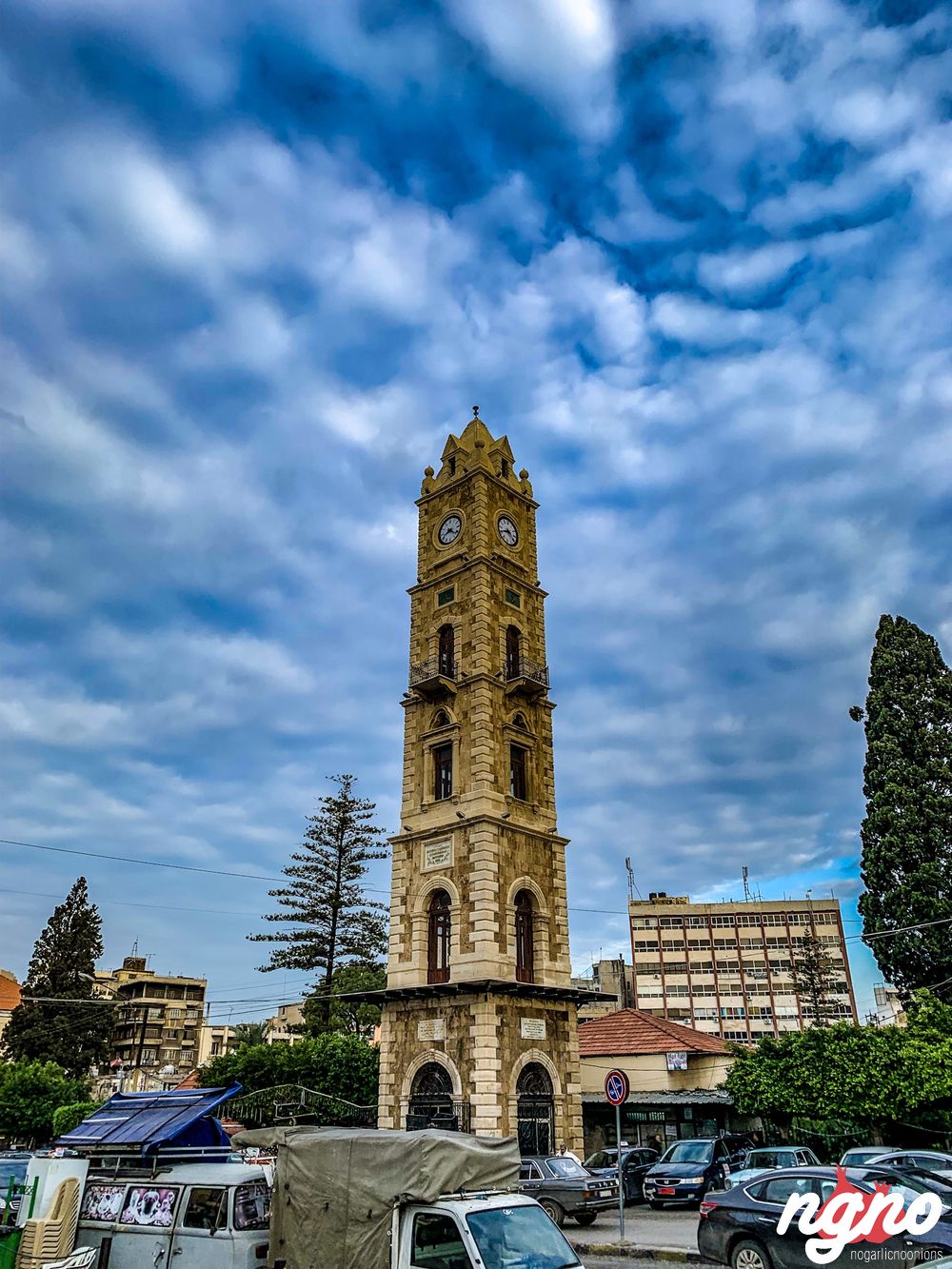Tripoli (Trablos), 85 kilometers north of Beirut, has a special character all its own. Thanks to its historical wealth, relaxed lifestyle and thriving business climate, this is a city where modern and medieval blend easily into a lively and hospitable metropolis. Known as the capital of the North, Tripoli is Lebanon’s second-largest city.
Forty-five buildings in the city, many dating from the 14th century, have been registered as historical sites. Twelve mosques from Mamluke and Ottoman times have survived along with an equal number of “madrassas” or theological schools.
Secular buildings include the “hammam” or the bathing-house, which followed the classical pattern of Roman-Byzantine baths, and the “khan” or caravansary. The souks, together with the “khans,” form an agglomeration of various trades where tailors, jewelers, perfumers, tanners, and soap-makers work in surroundings that have changed very little over the last 500 years.
1 - The Citadel: Overlooking the city is the imposing Citadel of Tripoli known as Qal’at Sinjil (Saint Gilles) which has been renovated and changed many times during its history. Today the castle’s main features are an octagonal Fatimid constructions converted to a church by the Crusaders, some Crusader structures of the 12th-13th centuries, a number of 14th century Mamluke additions, as well as additions The present state of this huge fortress (140 meters long and 70 meters wide) is largely the result of extensive restoration work by Mustafa Barbar Agha, governor of Tripoli at the beginning of the 19th century.
2 - Church of St. John of the Pilgrims: Mount Significant remains of this Crusader church were found in the Maronite Cemetery of Saint John about 200 meters south of the Castle on Abu Samra hill There are two joined chapels, the larger of which has a semi-circular apse. The smaller one, with a rectangular apse, was reserved for funerary use. The church was surrounded by a large Crusader cemetery.
3 - The Great Mosque: Begun in 1294 and completed in 1315, the Great Mosque was built on the ruined 12th century Crusader cathedral of St. Mary of the Tower. Its large courtyard is surrounded by porticos and a domed and vaulted prayer hall. Inside, one can still see elements of Western architecture from the old church, including the northern entrance and the Lombard style bell tower which was transformed into the minaret. The many foundation plaques and decrees inscribed in the great Mosque and its surrounding madrassas not only inform us about the building but reveal details of the daily life of the Mamluke period.
4 - Taynâl Mosque: This important mosque was built in 1336 by Saif ed-Dine Taynâl on the site of a ruined Crusader Carmelite church. The adjoining domed mausoleum holds the tomb of the founder. Some elements of the original structure were re-used in the mosque, for example, the two rows of granite columns with late Roman capitals which stand in the middle of the first prayer hall. The entrance of the second prayer hall is a unique example of the architectural decoration in Tripoli during the Mamluke era.
5 - Al-Muallaq Mosque: The name means "hanging mosque," possibly because it is on the second floor.
This small mosque, built in the middle of the 16th century, has a plain whitewashed interior with steps leading down to an attractive courtyard garden. The minaret is octagonal and unadorned.
6 - Burtasiyat Madrassa-Mosque: The beautiful Burtasiyat Madrassa-Mosque was built during the first quarter of the 14th century A.D.
This domed structure has a square minaret erected above the entrance arch and is ornamented with double windows which have black and white stone arches. The dark stone portal is decorated with stalactites, and the mihrab is covered with an ornate golden mosaic.
7 - Al-Qartâwiyat Madrassa: The madrassa is known for the fine workmanship of its ceilings decorated with honey-comb patterns and stalactites, and its elegant façade of alternate black and white facings. Built during the first quarter of the 14th century A.D., Al-Qartâwiyat is probably Tripoli's most ornate building and the only one with a prayer hall covered by an oval dome.
8 - Madrassa al Tuwashiyat: Built during the second half of the 15th century, this structure and its elaborate mausoleum are constructed of sandstone in decorative black and white patterns.
The portal is higher than the façade of the building and decorated with shell motifs embellished by radiating zigzag motif, stalactites, and twisted colonettes.
9 - Khanqash: This unique building in Lebanon was constructed during the second half of the 15th century to house Muslim mystics or Sufis. It is designed with an open courtyard and pool. The courtyard is surrounded by small rooms and a raised platform, or iwan, behind an arch of alternating black and white stones. The arch is supported by granite columns.
10 - Hammam 'Izz ed-Dîne: This public bathing-house was given to the city by its Mam-luke governor 'Izz ed-Dîne Aybak. The governor, who died in 1298, is buried in a mausoleum beside the hammam. In building these baths, he used choice remains from the Crusader church and hospice of Saint James. The front portal is decorated with an inscribed fragment between two Saint-James shells, and the inner door is surmounted by the paschal lamb. The Hammam 'Izz ed-Dîne was in continual use until recently, and it is now under restoration.
11 - Hammam el-Abed (near Khan es-Saboun): Tripoli's only functioning hammam is Hammam el-Abed, probably built at the end of the 17th century. It has the typical pierced domes of Mamluke and Ottoman-era public baths. The interior, with its cushions, central fountain, and traditional fittings, is a living museum.
12 - Hammam Al Jadid: Built around 1740, and called the “New Bath,” this is by far the largest “hammam” in the city, although it has not been in operation since the 1970s, its faded grandeur still stirs the imagination.
13 - Khân Al-Khayyatin: The Khân Al-Khayyatin or Tailors’ Khan, is one
of the oldest in Tripoli, dating to the first half of the 14th century. It was probably built on the remains
of a Byzantine and Crusader monument in the center of the ancient commercial suburb which controlled passage over the Abu ‘Ali river.
Thus, this “khan” has a different plan than the others in the city. The restored structure consists
of a long passageway with tall arches on each side and ten transverse arches. Just at its western entrance stands a granite column surmounted by a marble Corinthian capital.
14 - Khân Al-Misriyyîn: The Khân Al-Misriyyîn (Caravansary of the Egyptians) was probably built in the first half of the 14th century. The traditional arcaded two-story khan has an open courtyard with a fountain in the center.
15 - Souk Al-Haraj: A unique sight, this covered 14th-century bazaar has a high vaulted ceiling supported by granite columns which may have originally been part of Roman or Crusader structures. A total of 14 granite shafts can be seen along the north, south and east sides. Today this space is occupied by sellers of floor mats, pillows, and mattresses.
16 - Lions' Tower: While most of the numerous coastal towers and fortifications which protected Tripoli during Mamluke times have disappeared or been encroached upon by modern buildings, the mid-15th century Tower of the Lions is still remarkably preserved. It was given this name in the 19th century because of the lions carved in relief that once stood above the entrance. The tower is a fortress two stories high with lofty vaulted ceilings. The west portal is in the typical Mamluke black and white stone pattern. From the outside, you can see how the builders placed Roman columns horizontally in the wall reinforcements. Tripoli Today

Modern Tripoli, which has a population of about 500,00, is divided into two parts: El-Mina, (the port area and site of the ancient city) and the town of Tripoli proper. The Medieval city at the foot of the Crusader castle is where most of the historical sites are located. Surrounding this is a modern metropolis which is occupied with commerce, banking, and recreation. The area known as "at-Tall," dominated by an Ottoman clock tower (built in 1901/2) in the heart of downtown Tripoli, is the transportation center and terminus for most taxi routes. When shopping in the old souks or downtown area, remember that gold is a good buy. Other popular items are Tripoli’s famous sweets and traditional olive-oil based soap, water pipes and brass work. Al Mina, the port area, is a good place to find seafood restaurants and fish markets. The city’s most comfortable hotels and Western-style restaurants can be found in the beach resorts south of the city.












































































































































































































































